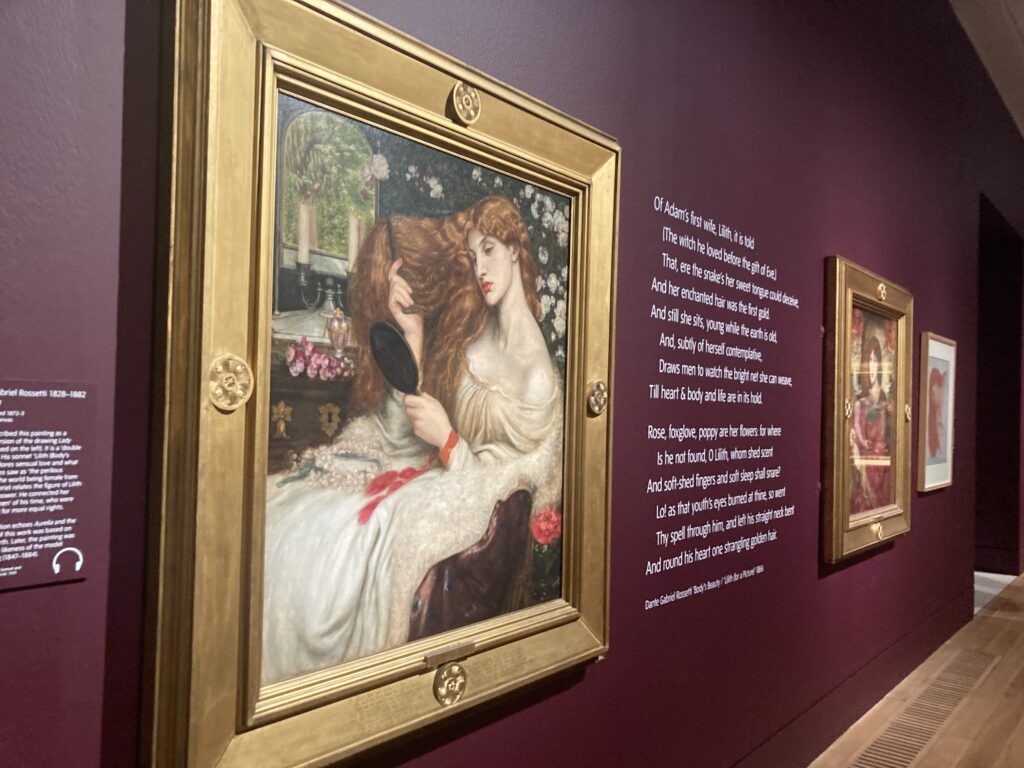by Stephanie Chatfield
First, a little background
The Royal Academy
Since its inception in the late 18th century, the Royal Academy was the hub of the art world in England – a behemoth that dominated British art. Like many aspects of Victorian society, the art world was stolid and rigid and allowed little room for those who did not go along with long-held social constructs.

The Royal Academy represented a status quo that anyone striving to be a serious artist could not afford to rebel against.
But 1848 was a time of revolution and political turmoil that created a sea change across Europe. Seven idealistic young art students, no doubt influenced by the currents of world events, formed a secret society to further their own artistic revolution.
They were united in their disdain for the Royal Academy – believing that British art had become predictable and filled with an endless supply of what critic John Ruskin later termed, “Cattle-pieces and sea-pieces and fruit-pieces and family-pieces, the eternal brown cows in ditches, and white sails in squalls, and sliced lemons in saucers, and foolish faces in simpers.” (Pre-Raphaelitism, Ruskin)
So, who were these Pre-Raphaelite artists?
These young upstarts longed to paint so realistically and so vividly that their work would inspire the viewer and shake up the stale stranglehold the Royal Academy had on British art.
Twenty-year old Dante Gabriel Rossetti, William Holman Hunt, 21, and John Everett Millais, 19, bonded over their artistic passions, and their newfound crusade. Joining this trio were their friends, sculptor Thomas Woolner, artist James Collinson, painter/writer Frederick George Stephens, and writer William Michael Rossetti (brother to Dante Gabriel Rossetti).

It can’t be overstated that the creation of this brotherhood was a pursuit fueled by youthful, excited ideals. These young men were ready to paint their way through the world, replacing dark, stagnant art with vibrant jewel-like hues. They were passionate about forging a new direction, while taking cues from the past.
Fascinated by art of the late medieval and early renaissance, the Pre-Raphaelites admired art created prior to the artist Raphael. At the dawn of the industrial revolution, these idealists wanted to express themselves with colorful art reminiscent of the 14th and 15th century, but with a bold, modern slant that included more realism and contemporary subject matter.
They embraced the contrast of forward thinking with more than a glance backward, celebrating Victorian modernity while hearkening back to art of the medieval world.
This is the Pre-Raphaelite paradox: they wanted to paint with stunning realism, yet they also wanted to paint a dream.
More on the Pre-Raphaelites
- Birth of the Brotherhood
- Dante Gabriel Rossetti: The Romantic Rebel of the Pre-Raphaelites
- John Everett Millais: The Prodigy Who Painted Emotion
- Pre-Raphaelite FAQs
- Pre-Raphaelite List of Immortals
- Pre-Raphaelite Luminosity
- The Diaries of William Allingham
- What is the ‘Pre-Raphaelite Woman?’
- William Holman Hunt: The Visionary of Pre-Raphaelite Symbolism
- Women of the Pre-Raphaelite Circle

